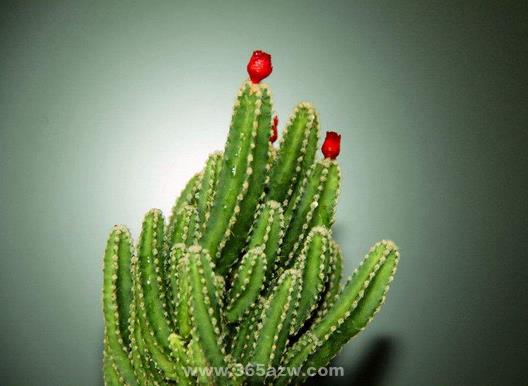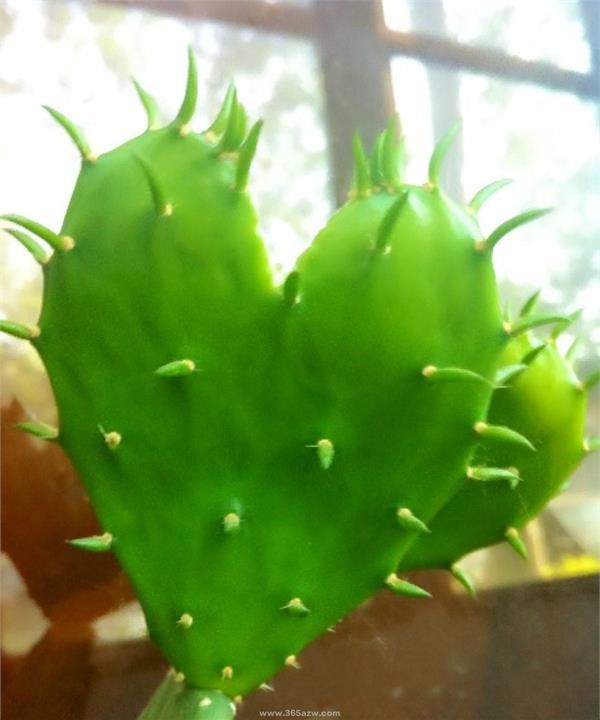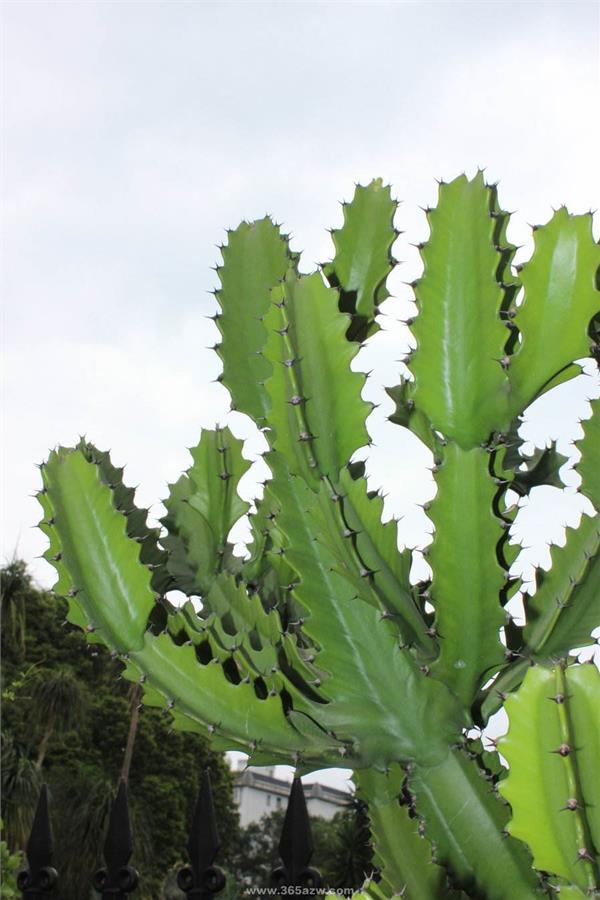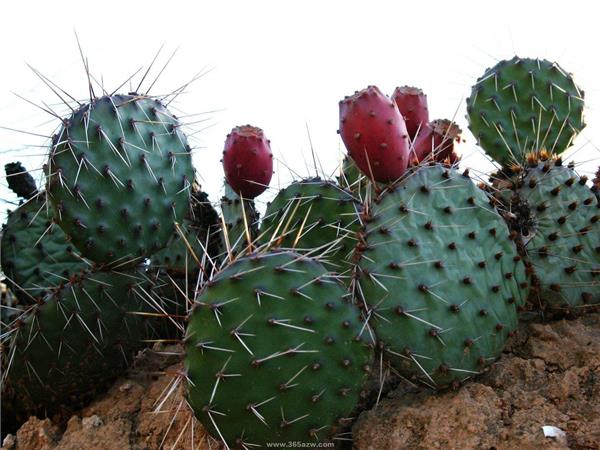How to raise cactus and matters needing attention
Although the cactus is very resistant to freezing and high temperature, but the temperature difference between day and night can not be too big, let's take a look at how to raise the cactus and the matters needing attention.

How to raise cactus and matters needing attention
Culture method of cactus
Soil
Use soil; the soil that the cactus likes is nutritious and loose, so the soil has to be specially prepared. 4 parts of vermiculite, 4 parts of fine sand and 2 parts of fully mature humus can be used to stir evenly. The culture soil should be barely clumped by hand, and loose sand is better. This kind of soil is more suitable for cactus growth.
Watering and spraying
Terrestrial cactus has obvious growth period and dormant period, the growing period should be watered, the dormant period should be watered less or even no watering. For epiphytic type, if the winter temperature is kept above 12 ℃, it can be watered and sprayed all the year round; if the winter temperature is kept below 12 ℃, watering can be reduced and stopped. Water temperature should be close to soil temperature as far as possible, early (before sunrise) and late (after sunset) in summer, from 10:00 to 11:00 in winter, and directly onto basin soil, otherwise the appearance of thorns will be affected. In addition, it is necessary to sprinkle water on the ground in summer to increase air humidity.
Fertilizer application
Fertilization should grasp the following principles: timely, appropriate amount, depending on the object. Fertilization is carried out in spring and autumn, and once every 20 days, it should be carried out in the early morning or evening on a sunny day. If the basin soil is dry, sprinkle some water on the basin soil and then apply fertilizer with a concentration of 0.05%-0.2%. The effect is better if it is watered once the next morning. Terrestrial fertilization requires fertilizers rich in potassium and phosphorus and less nitrogen, while epiphytic fertilizers require more nitrogen fertilizer.

Light
Terrestrial type prefers plenty of sunshine, especially in winter. Generally, tall, cylindrical and flat cacti are more resistant to strong light and can be placed outdoors without sunshade in summer, while smaller spherical ones prefer semi-overcast conditions in summer, covering the top growing point of Jinzhu with a circular plastic film in June and August in summer high temperature season, so that all parts of the sphere can grow evenly. Epiphytic cacti require semi-overcast conditions all the year round.
Temperature
The suitable temperature for cactus growth is between 20 and 35 ℃. The terrestrial type does not require a high temperature during the dormancy period in winter, but the temperature can be maintained at 4: 7 ℃ while keeping the basin soil dry. Epiphytic type, however, requires a higher temperature in winter to maintain a temperature of 10-13 ℃ or higher. When the cactus reaches 30: 35 ℃ in summer, the growth rate of most cacti slows down, and sometimes some kinds of stems turn yellow or burn, so the sun must be shaded and more water must be sprinkled on the ground to lower the temperature.
Air
Cactus flowers are mostly native to desert open areas, with good ventilation and fresh air. Therefore, in the hot weather in midsummer, we should do a good job of ventilation and cooling in the cultivation site. The cultivation greenhouse should choose a well-ventilated environment and set up more vents such as windows and skylights to facilitate ventilation in the hot summer weather. If necessary, equipment such as exhaust fans, hair dryers or electric fans can also be installed to enhance the air circulation effect of the environment, so as to promote cactus flowers to spend the summer safely.

Matters needing attention in cactus culture
The main results are as follows: (1) the young cactus should be changed once a year. Growing plants do not need to change pots year after year. However, after a certain period of time, the nutrients in the basin tend to be exhausted, and the root system is full of basin soil, or due to frequent watering, the basin soil becomes hard and hardened, which is not conducive to drainage and air permeability, which is easy to cause root rot. Therefore, the basin is generally changed every 2-3 years. The fast-growing varieties can be larger than the original basin when changing the basin, and it is appropriate that the original basin can be put into the new basin. In the process of cultivation, the basin topsoil should be often loosened to make the soil well ventilated so as to facilitate root growth.
(2) the plants that often maintain a certain degree of dryness and sufficient light in cultivation and management have light stem color and slow growth, but the thorns and thorns are well developed, stout and beautiful. The plants that are often exposed to high temperature, high humidity and poor light conditions grow rapidly, the stem is soft, and the color is bright, but the growth of thorns and thorns are underdeveloped, and the color characteristics are not obvious, such as red thorns often turn dark brown. Therefore, the amount of watering should be adjusted according to the purpose of cultivation.
(3) the water quality for watering and spraying should not contain too much sodium chloride and other salts. Generally speaking, Rain Water and well water are OK, but the water temperature should not be too low, and it is best to be close to the temperature. Tap water should be put into the tank for 2 days and then reused. Such as family fish farming, it is more appropriate to irrigate potted flowers with fish tank water.
Key points of cactus maintenance
The real cactus is really easy to raise, no matter it is watering or using the soil, but the cactus purchased by some students looks good on the surface, but actually has no roots, mainly reflected in the small potted plants bought by the roadside and the small potted plants bought in the flower market.

Although the cactus is a succulent plant, it is more drought-tolerant and will not die completely even if it is not watered for a month. But it must be watered for it to grow healthily. Winter: watering about every 20 days, the watering time is appropriate in the afternoon when the temperature is higher. If the living room is relatively dry, foliar spraying water can be used to keep the stem green. After the whole plant enters the dormant period, it can not be watered.
Spring: with the rise of the temperature, the number of watering can be increased appropriately, the principle of watering is not dry, watering is thorough; not too much watering, nor long-term non-watering. When the temperature rises to about 20 ℃, it is suitable to water once every 7-10 days.
Summer: high temperature, large evaporation, exuberant growth, is the season of the largest water demand for edible cactus, generally every 3-5 days need to be watered, when the temperature rises to more than 30 ℃, in order to maintain stem swelling pressure, increase ornamental, it is best to spray water on cactus stem 1-2 times every morning and evening.
Autumn: gradually decreasing. Watering potted plants should also pay attention to water temperature and water quality. Water is neutral or slightly PH acidic, it is best to use tap water for two days before use. In addition, watering had better be close to the indoor temperature, and more attention should be paid to potted edible cactus in cold areas in the north.
It is mainly shown in the small potted plants purchased by the roadside and the small potted plants purchased in the flower market.

Although the cactus is a succulent plant, it is more drought-tolerant and will not die completely even if it is not watered for a month. But it must be watered for it to grow healthily. Winter: watering about every 20 days, the watering time is appropriate in the afternoon when the temperature is higher. If the living room is relatively dry, foliar spraying water can be used to keep the stem green. After the whole plant enters the dormant period, it can not be watered.
Spring: with the rise of the temperature, the number of watering can be increased appropriately, the principle of watering is not dry, watering is thorough; not too much watering, nor long-term non-watering. When the temperature rises to about 20 ℃, it is suitable to water once every 7-10 days.
Summer: high temperature, large evaporation, exuberant growth, is the season of the largest water demand for edible cactus, generally every 3-5 days need to be watered, when the temperature rises to more than 30 ℃, in order to maintain stem swelling pressure, increase ornamental, it is best to spray water on cactus stem 1-2 times every morning and evening.
Autumn: gradually decreasing. Watering potted plants should also pay attention to water temperature and water quality. Water is neutral or slightly PH acidic, it is best to use tap water for two days before use. In addition, watering had better be close to the indoor temperature, and more attention should be paid to potted edible cactus in cold areas in the north.
Related
- Wuhan Hospital Iron Tree Blooming Result Was Instantly Frightened by the Gardener Master
- Which variety of camellia is the most fragrant and best? Which one do you like best?
- What is the small blue coat, the breeding methods and matters needing attention of the succulent plant
- Dormancy time and maintenance management of succulent plants during dormancy
- Minas succulent how to raise, Minas succulent plant pictures
- What are the varieties of winter succulent plants
- How to raise succulent plants in twelve rolls? let's take a look at some experience of breeding twelve rolls.
- Attention should be paid to water control for succulent plants during dormant period (winter and summer)
- Watering experience of twelve rolls of succulent plants
- Techniques for fertilizing succulent plants. An article will let you know how to fertilize succulent plants.



